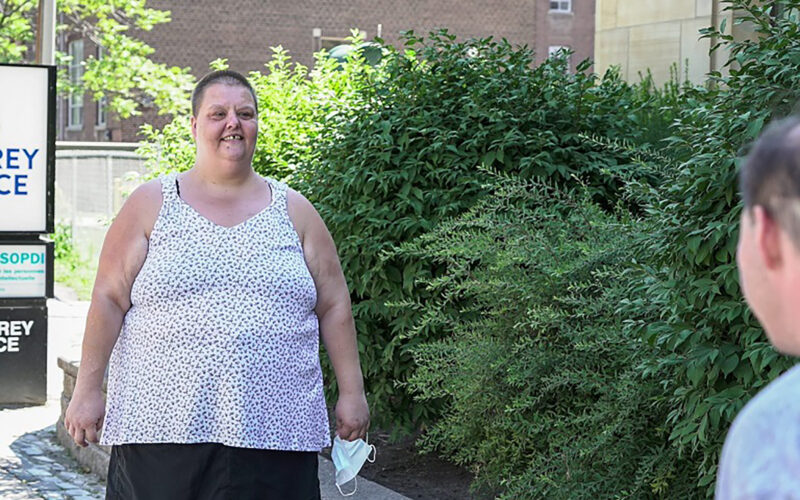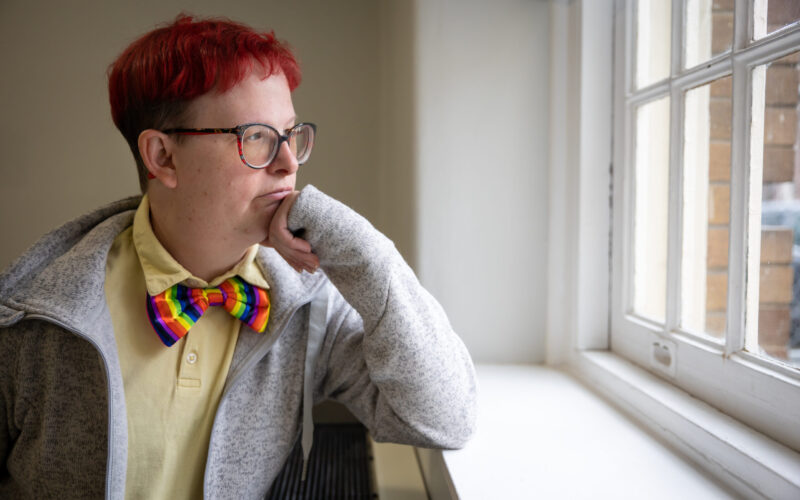Many children experience feelings of sadness or worry at one time or another. But sometimes, these feelings may point to a more serious issue. How can you tell when there is a reason for concern? Anxiety and depression tend to be more common in children with autism.[i] Research suggests more than 70 percent of young people with autism have mental health conditions, including anxiety and depression.[ii] If your child has a mental health condition, know that you are not alone and there are supports to help you. Some families with children experiencing severe anxiety or depression may also benefit from our Urgent Response Services.
How can I tell if my child has anxiety or depression?
Symptoms of anxiety and depression may look very different from one child to another. These are some signs to look out for:
- Behavioural changes: This can include emotional outbursts, task avoidance, increasing anger or aggression, violent behaviour, or self-injury.
- Stress response to change: Intense levels of distress related to a change of routine or a change in your child’s environment could be a sign of anxiety.
- Becoming withdrawn: This can include withdrawing from friends, family, or situations. If your child doesn’t want to do something they usually enjoy (like a favourite activity), this may be a sign of anxiety or depression.
- Physical symptoms: If physical symptoms appear frequently, especially when there’s a change in your child’s routine, this may indicate a deeper issue. Regular stomach aches, nausea or headaches are common physical manifestations of anxiety.
How can I support my child?
If your child has anxiety or depression, here are some ways you can help them.
- Stay calm: Sudden behavioural changes in your child may catch you off guard. Keep in mind that your child may have difficulty expressing their feelings. Try your best to remain a calm presence around your child when they experience strong emotions.
- Try a weighted blanket: Deep pressure can have a calming effect on the nervous system. This is why some occupational therapists use them to help relieve anxiety in children with autism.
- Use social stories: A social story can help prepare your child for a change in their routine, or something new (like a new situation) that may cause anxiety. The social story, a technique developed by Carol Gray, uses visuals to show your child what they can expect. This can help address your child’s worries ahead of time. When you develop a social story, be sure to use “I” statements and your child’s name. The idea is to write the story from their perspective.
- Experiment with relaxation techniques: Teach your child how to self-soothe. Slowly counting to ten, practicing deep breathing, or using visualization are all great ways to calm down. An example of visualization can be going for a walk together and identifying ten things you see in the park. The idea is to equip your child with tools they can use to soothe themselves when they experience feelings of anxiety, stress, or depression.
- Make a sensory kit: This is a portable box, bag, or bin filled with sensory tools and toys to help calm your child’s nervous system. This can help relax your child when they experience big emotions. Put items in the sensory kit that you know are soothing for your child. The kit may include fidget toys, stress balls, noise-reduction headphones, or a notepad and pencil, among other items.
- Focus on your child’s strengths: It may be hard to focus on your child’s strengths when you are managing their challenging behaviour. But this is when it’s more important than ever, both for your child and for yourself. Show your child you’re excited about the things that interest them. This is a great way to support a child coping with anxiety or depression. Embracing your child’s uniqueness and focusing on their strengths may also help relieve your own stress.
- Know when to call 911: You may encounter situations where your child’s behavioural changes escalate, and they become aggressive or violent. If this happens, the first step is to follow your family safety plan to ensure everyone in the household is safe. If things escalate to a point where your child or another household member’s safety is at risk, it’s time to call 911 or another crisis hotline.
When should I seek treatment?
Your child may benefit from individual or group therapy if:
- Feelings of anxiety or depression persist for a very long time
- They express feelings of hopelessness
- Their anxiety or depression leads to reckless or risky behaviour
Therapy can help your child by:
- Teaching them coping methods
- Improving social and communication skills (in a group therapy setting)
- Normalizing your child’s feelings and experiences (in a group therapy setting)
- Providing professional support to deal with complex issues (one-on-one therapy is best in these situations.)
When should my child see a doctor?
If your child exhibits any of the following symptoms due to anxiety or depression, it is time to see a doctor:
- Weight loss
- Lack of appetite
- Insomnia
How Surrey Place can help
If you are a caregiver with a child who exhibits high-risk behaviours that require an urgent response, like violent thinking, aggression, or property destruction, you may be eligible for Surrey Place’s Urgent Response Services. This program can be accessed through the Ontario Autism Program (OAP), which provides funding and services for children and youth under 18 with autism, and their families and caregivers.
Surrey Place offers a variety of services for mental health support. This includes child and teen counselling for youth with autism who are coping with a mental health issue like anxiety or depression (please note this service is not covered under the OAP funding).
For support for a child with autism spectrum disorder whose needs are not urgent, please visit Surrey Place’s Autism Services page.
About Urgent Response Services
This resource was written with support from staff in Urgent Response Services. Urgent Response Services are part of the Ontario Autism Program. They were created to support children or youth with an emerging urgent need. Surrey Place leads Urgent Response Services for Toronto Region in partnership with 2-Spirited People of the 1st Nations, Community Living Toronto, Family Service Toronto, Geneva Centre, Holland Bloorview, Kerry’s Place, Lumenus, SAAAC, SMILE Canada and Strides Toronto.
References
“Autism Spectrum Disorder and Anxiety/Depression.” Anxiety & Depression Association of America. Available at: https://adaa.org/understanding-anxiety/autism-anxiety-depression. Accessed on February 6, 2023.“
The deep emotional ties between depression and autism.” Spectrum. Available at: https://www.spectrumnews.org/features/deep-dive/the-deep-emotional-ties-between-depression-and-autism/. Accessed on February 6, 2023.
“Do weighted blankets improve sleep for children with autism?” NAPA Center. Available at: https://napacenter.org/weighted-blanket-autism/. Accessed on February 7, 2023.


